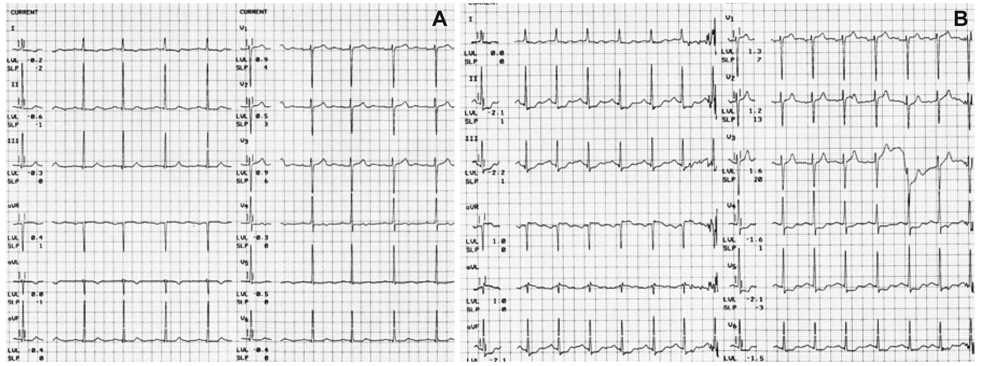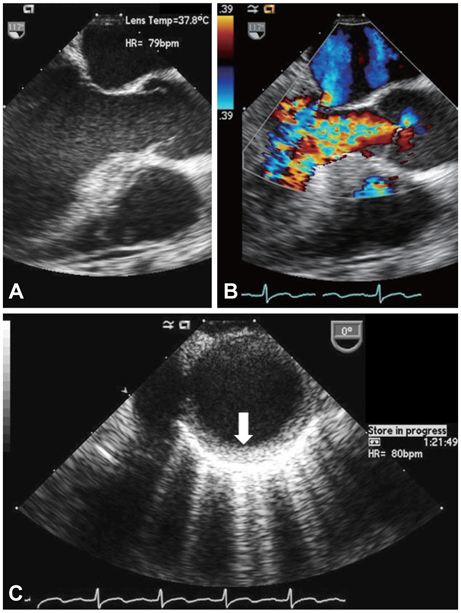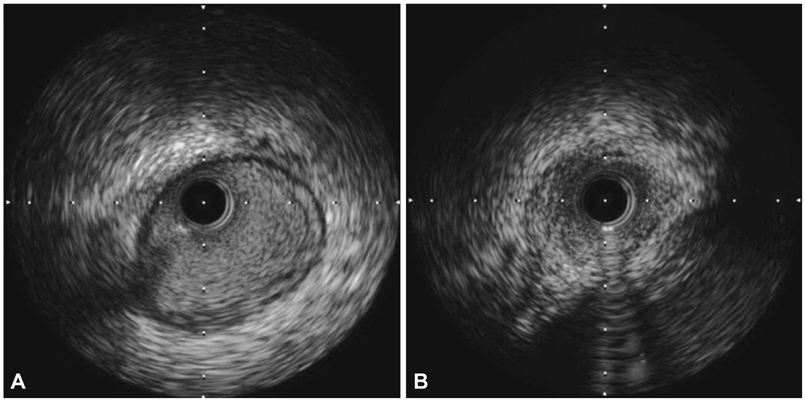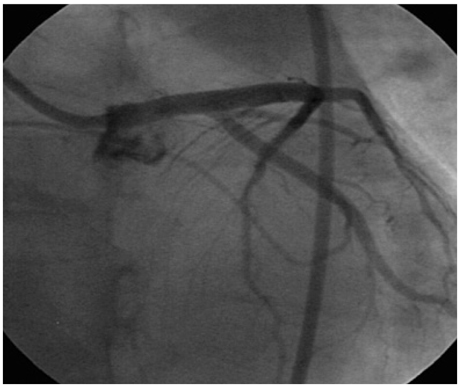Korean Circ J.
2010 Dec;40(12):680-683. 10.4070/kcj.2010.40.12.680.
A Case of Cogan's Syndrome With Angina
- Affiliations
-
- 1Division of Cardiology, Department of Internal Medicine, Sahmyook Medical Center, Seoul Adventist Hospital, Seoul, Korea. mulgang@gmail.com
- KMID: 2225169
- DOI: http://doi.org/10.4070/kcj.2010.40.12.680
Abstract
- Cogan's syndrome is a rare systemic inflammatory disease and can be diagnosed on the basis of typical inner ear and ocular involvement with the presence of large vessel vasculitis. We report a case of Cogan's syndrome with stable angina resulting from coronary ostial stenosis caused by aortitis.
Keyword
MeSH Terms
Figure
Reference
-
1. Mazlumzadeh M, Matteson EL. Cogan's syndrome: an audiovestibular, ocular, and systemic autoimmune disease. Rheum Dis Clin North Am. 2007. 33:855–874.2. Chynn EW, Jakobiec FA. Cogan's syndrome: ophthalmic, audiovestibular, and systemic manifestations and therapy. Int Ophthalmol Clin. 1996. 36:61–72.3. Grasland A, Pouchot J, Hachulla E, Bletry O, Papo T, Vinceneux P. Typical and atypical Cogan's syndrome: 32 cases and review of the literature. Rheumatology. 2004. 43:1007–1015.4. Haynes BF, Kaiser-Kupfer MI, Mason P, Fauci AS. Cogan syndrome: studies in thirteen patients, long-term follow-up, and a review of the literature. Medicine. 1980. 59:426–441.5. Vollertsen RS, McDonald TJ, Younge BR, Banks PM, Stanson AW, Illstup DM. Cogan's syndrome: 18 cases and a review of the literature. Mayo Clin Proc. 1986. 61:344–361.6. Gluth MB, Baratz KH, Matteson EL, Driscoll CL. Cogan syndrome: a retrospective review of 60 patients throughout a half century. Mayo Clin Proc. 2006. 81:483–488.7. Raza K, Karokis D, Kitas GD. Cogan's syndrome with Takayasu's arteritis. Br J Rheumatol. 1998. 37:369–372.8. Chun KJ, Kim SI, Na MA, Choi JH. Bilateral ostial coronary artery lesions in a patient with Takayasu's arteritis. Korean Circ J. 2004. 34:118–119.9. Park JS, Lee HC, Lee SK, et al. Takayasu's arteritis involving the ostia of three large coronary arteries. Korean Circ J. 2009. 39:551–555.10. Riente L, Taglione E, Berrettini S. Efficacy of methotrexate in Cogan's syndrome. J Rheumatol. 1996. 23:1830–1831.11. Orsoni JG, Zavota L, Vincenti V, Pellistri I, Rama P. Cogan syndrome in children: early diagnosis and treatment is critical to prognosis. Am J Ophthalmol. 2004. 137:757–758.12. McCallum RM. Cogan's syndrome. Current Ocular Therapy. 1993. 4th ed. Philadelphia: WB Saunders Company;410.






